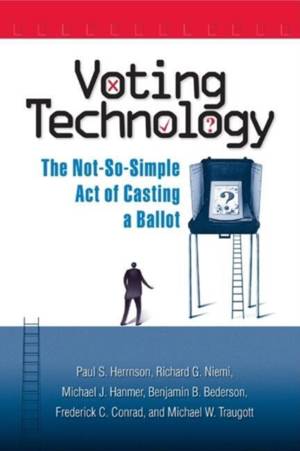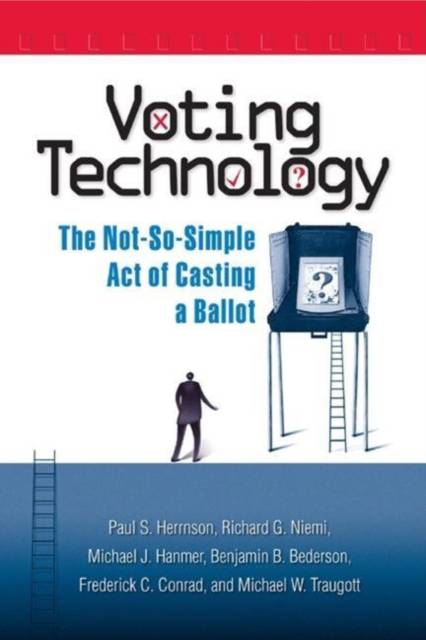
- Afhalen na 1 uur in een winkel met voorraad
- Gratis thuislevering in België vanaf € 30
- Ruim aanbod met 7 miljoen producten
- Afhalen na 1 uur in een winkel met voorraad
- Gratis thuislevering in België vanaf € 30
- Ruim aanbod met 7 miljoen producten
Voting Technology
The Not-So-Simple Act of Casting a Ballot
Paul S Herrnson, Richard G Niemi, Michael J HanmerOmschrijving
Voting difficulties hung over America's presidential election in 2000 like a dark cloud. Hanging chads, a butterfly ballot, and the Supreme Court remain the most vivid memories of that political donnybrook. Passage of 2002's Help America Vote Act sparked further interest in the physical process of casting a ballot, yet several recent contests still produced confusion at the polls. A solution to at least some of those problems may be found in new technology, but such innovations carry their own concerns and questions. V oting Technology is the first book to investigate in a scientific and authoritative manner how voters respond to the new equipment. The authors--an interdisciplinary group of experts in American elections, political behavior, human-computer interaction, and human factors psychology--assess five commercially available voting systems, each one representing a specific class based on shared design principles, as well as a prototype system not currently available. They evaluate the systems against different criteria (including ease of use, speed, and accuracy) using field experiments, laboratory experiments, and expert reviews. The results reveal the good and bad about the new systems, including specific features that contribute to clarity, confusion, or error. Going beyond the concern with spoiled ballots, they determine whether voters actually cast their ballots for the candidates they intended to support. They address fundamental questions of whether voters like and trust the equipment and whether the various systems are equally usable by all voters. Their research also opens up an entirely new line of inquiry by asking about the interaction between ballot format and voter behavior. The concluding chapter pulls together best practices that will guide manufacturers of voting systems, ballot designers, election officials, political observers, and of course, voters. In a political system based on free exercise of personal choice, the least w"
Specificaties
Betrokkenen
- Auteur(s):
- Uitgeverij:
Inhoud
- Aantal bladzijden:
- 232
- Taal:
- Engels
Eigenschappen
- Productcode (EAN):
- 9780815735632
- Verschijningsdatum:
- 28/12/2007
- Uitvoering:
- Paperback
- Formaat:
- Trade paperback (VS)
- Afmetingen:
- 153 mm x 228 mm
- Gewicht:
- 322 g

Alleen bij Standaard Boekhandel
Beoordelingen
We publiceren alleen reviews die voldoen aan de voorwaarden voor reviews. Bekijk onze voorwaarden voor reviews.









